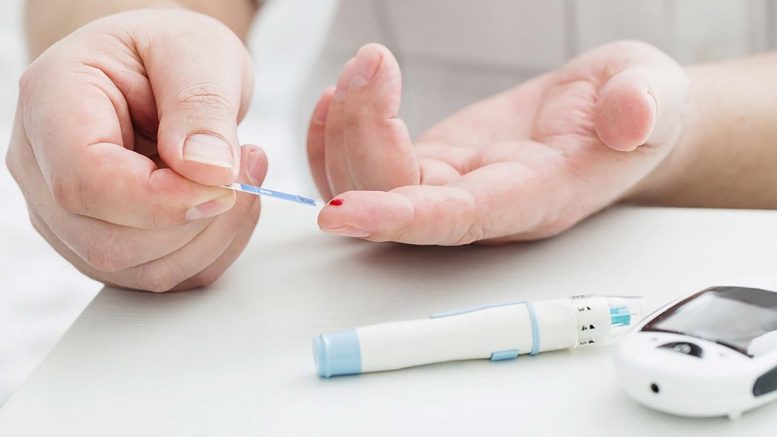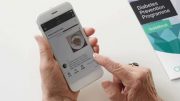Structured diabetes education works. Evidence increasingly shows that timely, relevant and accessible educational programmes can play a significant role in helping type 2 diabetes (T2D) patients manage their condition more effectively. When education is delivered well, everybody wins; patients report a better quality of life, health outcomes improve and healthcare costs reduce. Not all programmes measure the health outcomes, but where they do, some achieve relative reductions in a person’s HbA1c of over 10% in 6 months, alongside weight loss and lifestyle improvement. It’s this kind of sustained behaviour change that NHS organisations need to achieve if they’re to move the dial of diabetes care. To get there, however, many CCGs may need to rethink their diabetes education strategies to offer greater choice, extending delivery beyond a common reliance on a single provider.
As the annual cost of diabetes in England climbs towards £10 billion, the NHS’ ability to remodel the lifestyle behaviours of people living with T2D will be a key determinant in reducing the burgeoning burden of disease. Structured diabetes education (SDE) will undoubtedly form part of the solution. But a one-size-fits-all approach to delivering it simply will not work.
Poor uptake
There are a growing number of high-quality education programmes available, provided in a face to face setting or as a digital offering and, with the revised Long Term Plan reinforcing NHS England’s commitment to education pathways, more innovation is likely to emerge in the future. However, despite the obvious knock-on benefits of SDE – and despite clear NICE guidance to encourage it – patient uptake remains poor.
Last year, a summary of the 2016/17 National Diabetes Audit (NDA) suggested that the NHS still ‘underestimates’ or ‘undervalues’ the provision of SDE. The numbers tell the story. In 2016, whilst three quarters (74.5%) of T2D patients were offered SDE within 12 months of diagnosis, only 8% actually attended a course within the same timeframe.
Poor record-keeping is cited as a potential factor in low attendance rates, with the number of attendees apparently higher than recorded figures suggest. The 2017/18 NDA reports an incremental increase in the timely offer of education over the past three years, but patient attendance remains stubbornly low. The NDA has recently revised its policy on data capture, with GP practices and specialist services now legally required to supply the data for their practice or clinic. This, on paper at least, is likely to drive an upturn in performance in the coming years – we await the results. But SDE is not a tick-box exercise – it needs to be measured in outcomes as well as uptake. If more patients are to reap the genuine benefits of SDE, the way NHS organisations manage and deliver diabetes education must evolve to capture a wider audience.
Mind the gap
The majority of CCGs probably believe they’ve got their SDE sorted. For many, provision is tied up in a block contract with diabetes secondary care services or locked down in a licensed programme, or in programmes that were commissioned some time ago. Unfortunately, in some cases, these arrangements create a misleading comfort blanket that’s allowed the commissioning of education to become narrow and passive. As a result of poor monitoring, recording and reporting processes, organisations have poor visibility of crucial metrics like cost and performance, which typically leads to a limited understanding of course implementation, patient uptake and the impact of education on patient care. Fundamentally, a high number of CCGs and specialist services do not systematically review their diabetes education strategies and, as a consequence, gaps in their approach mean that deserving patients miss out. And that has a huge potential impact on the patients and the health economy for years to come.
One of the biggest implications of the ‘single provider’ approach is that education programmes are not aligned with patient need. With the number of diabetes diagnoses in England doubling in the last 20 years, the patient population is naturally diverse. This diversity undoubtedly creates challenges when designing and implementing programmes. NICE guidance says that SDE must be evidence-based and ‘suit the needs of the person.’ Moreover, programmes ‘should meet the cultural, linguistic, cognitive and literacy needs in the local area… and information should be provided in an accessible format (particularly for people with physical, sensory or learning disabilities and those who do not speak or read English).’
CCGs understand their local populations well. However, some fail to build on this intelligence to design or commission education services that respond to evolving patient expectations, diverse patient demographics and changing needs. This default to a single provider, can lead to inflexible or inaccessible programmes that cater for ‘the many’ but isolate hard-to-reach communities. Models are often configured to accommodate ‘low hanging fruit’ but don’t address the lifestyle and socio-economic challenges of diverse populations – all of which are known to influence behaviour change and human decision-making. The repercussions are reflected in attendance: if a course is at the wrong time of day, in the wrong location or the wrong language, patients won’t turn up. And if they do, they won’t get an experience that delivers optimal value.
Similarly, some CCGs set up services to comply with NICE recommendations, focusing entirely on newly diagnosed patients. This typically means that long-standing diabetes patients miss out on valuable education and local health economies pay the price in avoidable hospital admissions, costly prescribing and the ‘expensive complications’ associated with diabetes. The focus on new diagnoses is understandable – it makes sense to catch people early – but it minimises the value and impact of SDE and its ability to influence lifestyle behaviours in existing patients. And many people take a while to settle into the reality of what diabetes means for them, and may be more receptive to education programmes a year or so after diagnosis.
Fit-for-purpose not one-size-fits-all
As the cost of diabetes escalates and the impact on health services intensifies, CCGs must overcome a number of challenges if they’re to reap the rewards of SDE. Fundamentally, they must review their current approach and design an infrastructure that enables deserving patients to access programmes that meet their needs. The considerations are many: if only 20% of the UK’s diabetes patients have had diabetes education, how do you get it to the patients that you’ve missed? How do you ensure your programmes suit the ‘needs of the person’ and get to hard-to-reach communities? And, ultimately, how can you ensure that education isn’t just being ‘commissioned’ but is being ‘implemented effectively’? If the NHS is to improve diabetes outcomes, the huge gap between the ‘offer’ of education and the health outcomes after attendance must be closed. But the conventional approach – relying on standardised models and potentially inflexible single providers – won’t close it.
The answer is all about agility and choice. The most effective CCGs treat diabetes education as an ongoing endeavour, systematically reviewing and adjusting their SDE strategies to ensure services are tailored to population needs. Success requires working with a range of providers to offer patients choice. The best providers will take a partnership-based approach and work closely with customers to design flexible programmes that respond to identifiable needs. Moreover, they’ll provide end-to-end support – from the offer of education right through to implementation and outcomes – to drive attendance and inspire sustained behaviour change.
Ultimately, diabetes education isn’t one-size-fits-all. It’s time for CCGs to broaden the scope of SDE provision to deliver programmes that improve T2D care not just for the few, but for everyone.





